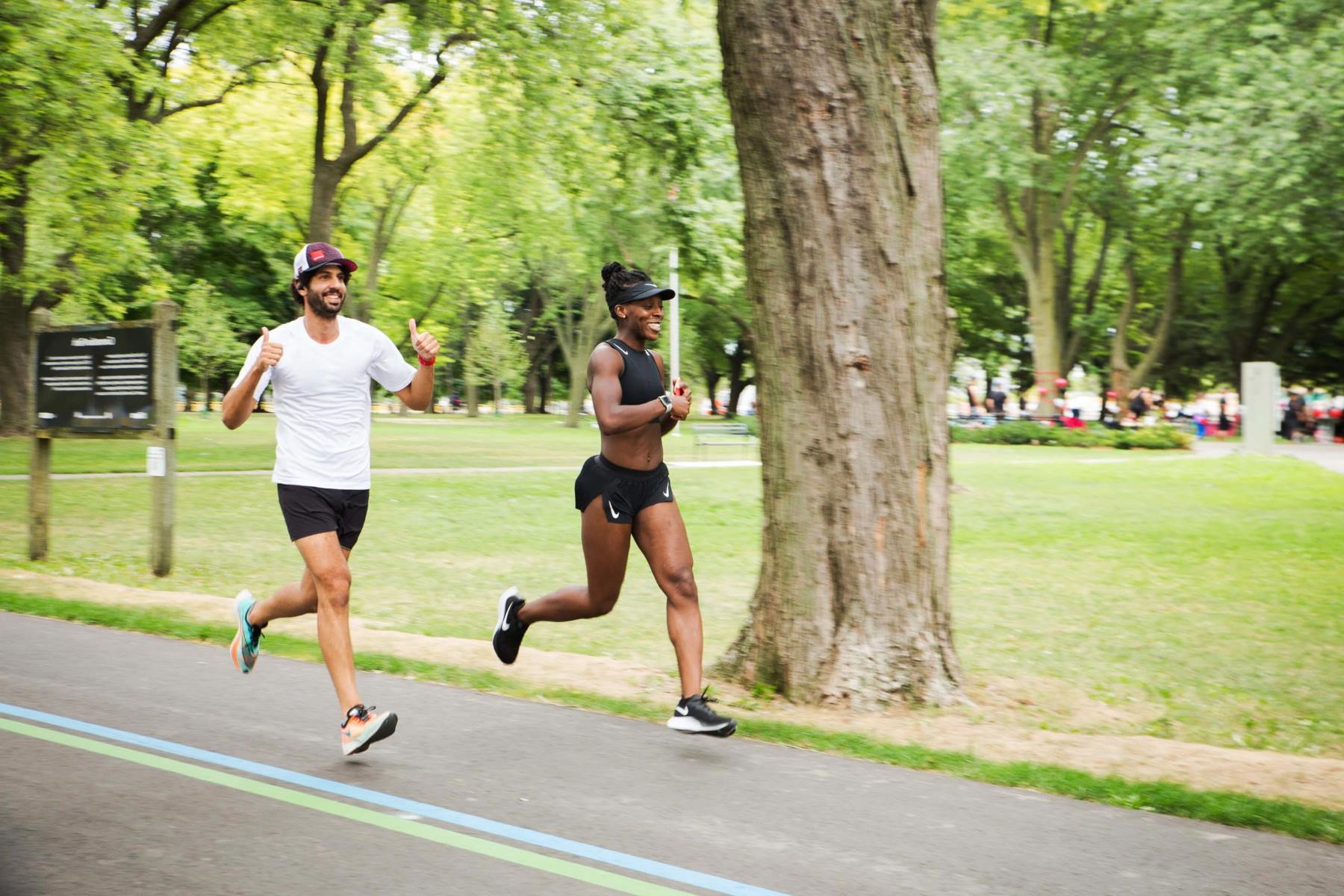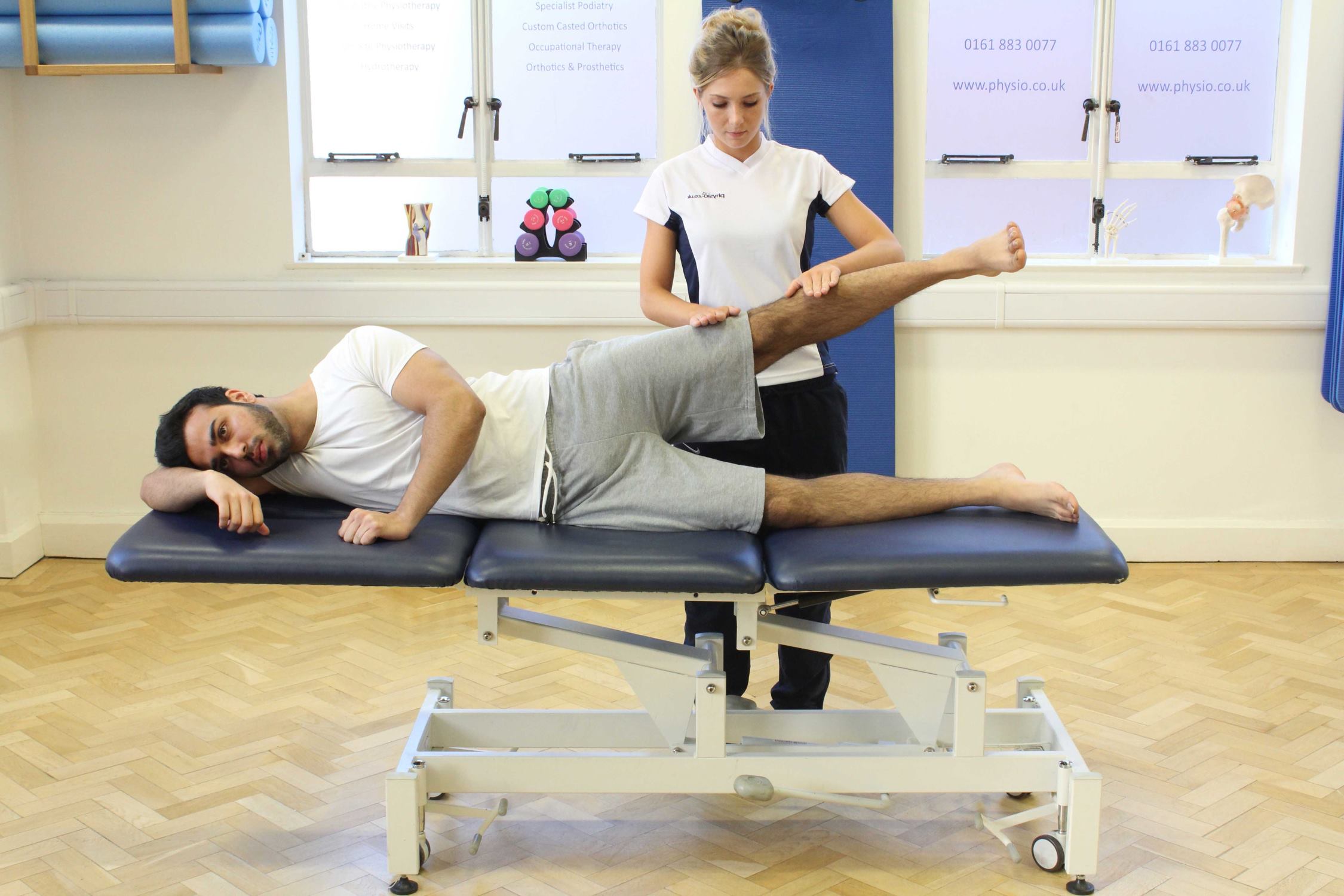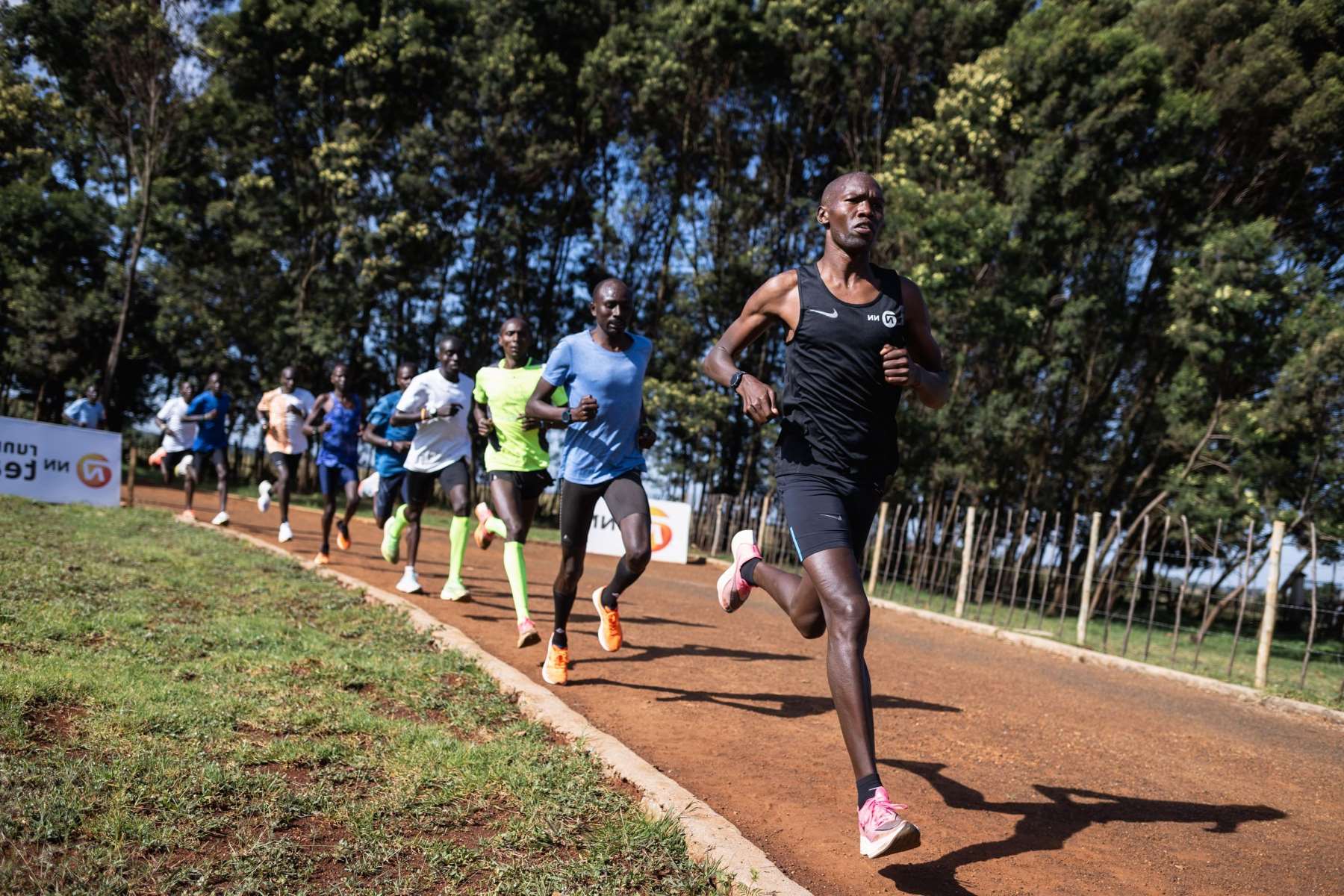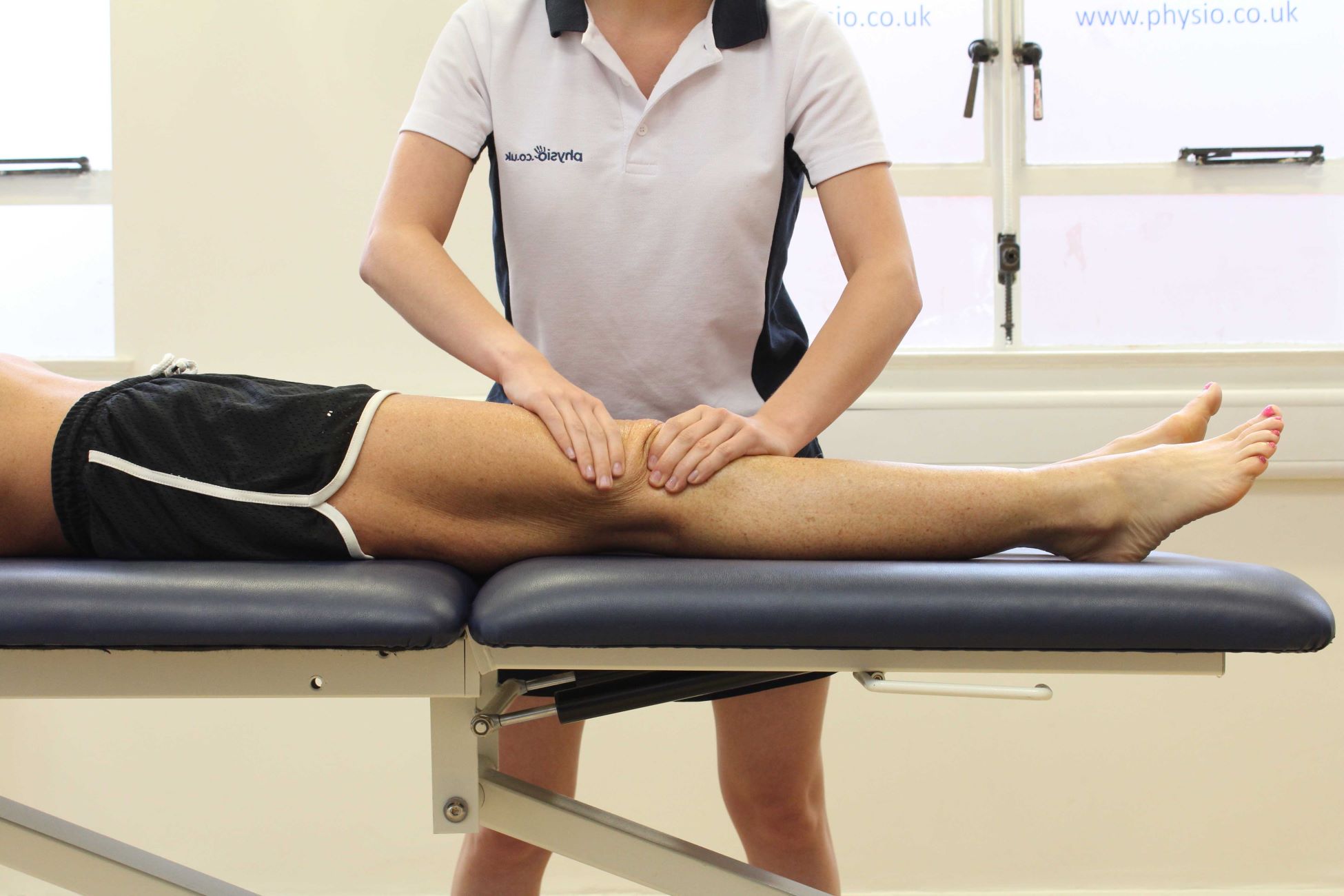Home>Training & Techniques>A Comprehensive Guide For Busy Runners To Increase Their Speed


Training & Techniques
A Comprehensive Guide For Busy Runners To Increase Their Speed
Published: February 28, 2024
Discover effective training and techniques to boost your running speed with our comprehensive guide for busy runners. Unlock your potential and achieve your speed goals today!
(Many of the links in this article redirect to a specific reviewed product. Your purchase of these products through affiliate links helps to generate commission for Therunningadvisor.com, at no extra cost. Learn more)
Table of Contents
- Understanding the Importance of Speed in Running
- Incorporating Interval Training into Your Routine
- Utilizing Strength Training for Speed Improvement
- Implementing Proper Nutrition for Enhanced Performance
- Maximizing Rest and Recovery for Optimal Speed Gains
- Setting Realistic Goals and Tracking Progress
- Utilizing Proper Running Form for Increased Speed
- Incorporating Speed Workouts into Your Training Plan
- Utilizing Cross-Training to Improve Speed and Endurance
- Incorporating Mental Strategies for Speed Improvement
Understanding the Importance of Speed in Running
Speed is a crucial component of running that significantly impacts overall performance and athletic achievement. Whether you're a seasoned marathoner or a casual jogger, enhancing your speed can lead to a multitude of benefits, including improved cardiovascular health, increased calorie burn, and enhanced athletic prowess.
First and foremost, speed plays a pivotal role in race performance. Whether you're aiming to achieve a personal best in a 5K or striving for a podium finish in a marathon, the ability to maintain a swift pace is essential. By honing your speed, you can surge ahead of competitors, conquer challenging terrains, and ultimately achieve your desired race time.
Furthermore, speed training can elevate your running efficiency and endurance. By incorporating speed-focused workouts into your regimen, such as intervals and tempo runs, you can enhance your cardiovascular capacity, muscular strength, and anaerobic threshold. This, in turn, enables you to sustain a faster pace for longer durations, making those final miles of a race feel more manageable and empowering.
In addition to performance benefits, speed training can also contribute to injury prevention and overall physical well-being. By engaging in high-intensity speed workouts, you can strengthen muscles, tendons, and ligaments, thereby reducing the risk of overuse injuries and enhancing overall resilience. Moreover, the heightened cardiovascular demands of speed training can lead to improved heart health and enhanced calorie expenditure, making it an effective tool for weight management and overall fitness.
Ultimately, understanding the significance of speed in running empowers athletes to optimize their training approach, set ambitious yet attainable goals, and unlock their full potential on the track or trail. By recognizing the multifaceted impact of speed on performance, health, and overall running experience, individuals can harness this knowledge to propel themselves toward greater athletic achievements and personal fulfillment.
Incorporating Interval Training into Your Routine
Interval training stands as a cornerstone of speed development for runners of all levels, offering a potent method to boost cardiovascular fitness, enhance speed, and elevate overall performance. This structured approach involves alternating between intense bursts of high-speed running and periods of active recovery or low-intensity activity. By integrating interval training into your running routine, you can unleash your full potential and achieve remarkable gains in speed and endurance.
The beauty of interval training lies in its adaptability to diverse fitness levels and training goals. Whether you're a novice runner aiming to build a foundation of speed and stamina or a seasoned athlete striving to shatter personal records, interval training can be tailored to suit your specific needs. For beginners, incorporating short intervals of high-intensity running followed by longer recovery periods can lay the groundwork for improved cardiovascular capacity and speed. As fitness levels progress, the duration and intensity of intervals can be adjusted to continually challenge the body and stimulate further adaptations.
One of the most compelling aspects of interval training is its ability to elicit the coveted "afterburn" effect, scientifically known as excess post-exercise oxygen consumption (EPOC). Following an intense interval session, the body continues to burn calories at an elevated rate during the post-workout recovery period, contributing to enhanced fat metabolism and overall calorie expenditure. This metabolic boost not only supports weight management efforts but also fosters ongoing improvements in cardiovascular fitness and endurance.
Moreover, interval training serves as a potent catalyst for physiological adaptations within the body. By subjecting muscles and cardiovascular systems to rapid fluctuations in intensity, interval workouts stimulate the development of fast-twitch muscle fibers, bolster aerobic and anaerobic energy systems, and enhance overall running economy. These adaptations translate to improved speed, power, and efficiency, enabling runners to maintain higher velocities for longer durations and conquer challenging terrains with greater ease.
Incorporating interval training into your routine necessitates a thoughtful and progressive approach. It's essential to start with a thorough warm-up to prepare the body for the demands ahead and mitigate the risk of injury. Structuring intervals with appropriate work-to-rest ratios, gradually increasing the intensity and duration of high-speed segments, and allowing for adequate recovery between sessions are key considerations for optimizing the effectiveness of this training modality.
In essence, interval training stands as a potent and versatile tool for runners seeking to elevate their speed and endurance. By embracing this structured approach and integrating it into your training regimen, you can unlock new levels of performance, fortify your cardiovascular capacity, and propel yourself toward achieving your running aspirations.
Utilizing Strength Training for Speed Improvement
Strength training serves as a formidable ally in the pursuit of speed enhancement for runners, offering a multifaceted approach to fortifying muscles, optimizing biomechanics, and unlocking explosive power. By integrating targeted strength exercises into your training regimen, you can cultivate a robust musculoskeletal foundation, bolster running economy, and propel yourself toward remarkable gains in speed and performance.
At the core of strength training for speed improvement lies the principle of enhancing muscular strength, power, and endurance. By engaging in exercises that target key muscle groups involved in running, such as the quadriceps, hamstrings, glutes, and calves, runners can fortify these essential structures, thereby minimizing the risk of fatigue-related performance decrements and reducing susceptibility to overuse injuries. Moreover, the development of muscular strength and power can translate to amplified propulsion with each stride, enabling runners to cover ground more efficiently and maintain higher velocities.
In addition to fortifying specific muscle groups, strength training plays a pivotal role in optimizing running biomechanics and neuromuscular coordination. By incorporating exercises that emphasize functional movement patterns, balance, and stability, runners can cultivate a more efficient and harmonious stride, minimizing energy wastage and enhancing overall running economy. Furthermore, the integration of plyometric drills and explosive movements can refine neuromuscular firing patterns, fostering greater force production and rapid muscle recruitment, essential components for achieving and sustaining higher speeds.
Furthermore, strength training contributes to injury prevention and overall resilience, a critical consideration for runners aiming to maximize their speed potential. By addressing muscular imbalances, enhancing joint stability, and fortifying connective tissues through targeted exercises, runners can mitigate the risk of common overuse injuries, such as IT band syndrome, patellofemoral pain syndrome, and Achilles tendinopathy. This proactive approach to injury prevention not only safeguards training continuity but also fosters long-term athletic development and well-being.
To harness the full benefits of strength training for speed improvement, it's essential to adopt a comprehensive and balanced approach. This entails integrating a diverse array of exercises, including bodyweight movements, resistance training, plyometrics, and functional drills, to target various muscle groups and movement patterns. Moreover, emphasizing proper form, progressive overload, and periodization within strength training routines is paramount to ensure continual adaptations and mitigate the risk of overtraining or plateaus.
In essence, the integration of strength training stands as a potent and indispensable strategy for runners seeking to elevate their speed and performance. By embracing this holistic approach and incorporating targeted exercises into their training regimen, runners can fortify their musculoskeletal foundation, optimize running biomechanics, and propel themselves toward achieving their speed-related aspirations.
Implementing Proper Nutrition for Enhanced Performance
Proper nutrition stands as a cornerstone of enhanced performance for runners, wielding a profound influence on energy levels, recovery, and overall athletic prowess. By strategically fueling the body with a balanced array of macronutrients, micronutrients, and hydration, runners can optimize their physical capacity, fortify their immune system, and propel themselves toward remarkable gains in speed and endurance.
Balancing Macronutrients
A fundamental aspect of implementing proper nutrition for enhanced performance involves striking a harmonious balance of macronutrients, namely carbohydrates, proteins, and fats. Carbohydrates serve as the primary fuel source for endurance activities, making their adequate intake crucial for sustaining energy levels during runs and facilitating post-exercise glycogen replenishment. Incorporating complex carbohydrates, such as whole grains, fruits, and vegetables, into the diet can provide sustained energy release and support optimal performance. Additionally, adequate protein intake is essential for muscle repair and growth, while healthy fats play a role in supporting overall health and providing a supplementary energy source.
Hydration Strategies
Optimal hydration is paramount for runners aiming to maximize their speed and endurance. Dehydration can lead to diminished performance, impaired thermoregulation, and increased susceptibility to fatigue and injury. Implementing a structured hydration strategy involves not only consuming adequate fluids before, during, and after runs but also replenishing electrolytes lost through sweat. Electrolyte-rich beverages or supplements can aid in maintaining proper fluid balance and supporting muscular function during intense training sessions.
Pre- and Post-Run Nutrition
Strategic pre- and post-run nutrition can significantly impact performance and recovery. Consuming a balanced meal or snack containing carbohydrates and a moderate amount of protein before a run can provide the necessary energy reserves and support muscle function. Post-run nutrition plays a crucial role in replenishing glycogen stores, facilitating muscle repair, and promoting recovery. Including a combination of carbohydrates and high-quality protein in post-run meals or snacks can expedite the recovery process and prepare the body for subsequent training sessions.
Micronutrient Optimization
In addition to macronutrients, optimizing micronutrient intake is essential for overall health and performance. Key micronutrients for runners include iron, calcium, vitamin D, and antioxidants, which play roles in oxygen transport, bone health, immune function, and mitigating oxidative stress. Incorporating a diverse array of fruits, vegetables, lean proteins, and whole grains into the diet can help ensure adequate micronutrient intake and support overall well-being.
In essence, implementing proper nutrition for enhanced performance entails a comprehensive and strategic approach to fueling the body for optimal speed and endurance. By prioritizing balanced macronutrient intake, strategic hydration, and micronutrient optimization, runners can fortify their physical capacity, expedite recovery, and propel themselves toward achieving their speed-related aspirations.
Maximizing Rest and Recovery for Optimal Speed Gains
Rest and recovery are often undervalued yet integral components of a runner's training regimen, playing a pivotal role in facilitating optimal speed gains and overall athletic performance. Embracing a strategic approach to rest and recovery empowers runners to mitigate the risk of overtraining, minimize the likelihood of injuries, and maximize the physiological adaptations that underpin speed enhancement.
One of the fundamental aspects of maximizing rest and recovery for optimal speed gains involves prioritizing adequate sleep. Quality sleep is paramount for physiological restoration, hormone regulation, and overall well-being. During sleep, the body undergoes crucial processes of tissue repair, muscle growth, and the release of growth hormone, all of which are essential for recovery and performance optimization. By aiming for 7-9 hours of quality sleep per night, runners can bolster their immune function, enhance mental acuity, and expedite the repair of microtears in muscle fibers induced by high-intensity training.
In addition to sleep, incorporating active recovery strategies into the training regimen can expedite the restoration of muscles and enhance overall recovery. Low-intensity activities such as gentle yoga, swimming, or leisurely cycling can promote blood flow, alleviate muscle soreness, and facilitate the removal of metabolic byproducts accumulated during intense training sessions. Furthermore, the integration of foam rolling, stretching, and mobility exercises can enhance flexibility, mitigate the risk of muscular imbalances, and promote overall musculoskeletal health, thereby supporting speed gains and injury prevention.
Strategic rest periods interspersed throughout the training schedule are equally crucial for optimal speed gains. By incorporating scheduled rest days and easy recovery weeks into the training plan, runners afford their bodies the opportunity to adapt to the physiological stressors induced by high-intensity workouts. These periods of rest enable the replenishment of glycogen stores, the repair of muscle tissue, and the restoration of neuromuscular function, ultimately priming the body for subsequent speed-focused training sessions.
Moreover, embracing a holistic approach to recovery involves attending to mental and emotional well-being. Engaging in stress-reducing activities such as meditation, mindfulness practices, or leisurely hobbies can mitigate the impact of psychological stressors on physical recovery, thereby fostering a conducive environment for speed gains and overall athletic development.
In essence, maximizing rest and recovery stands as a cornerstone of achieving optimal speed gains for runners. By prioritizing quality sleep, integrating active recovery strategies, incorporating strategic rest periods, and attending to mental well-being, runners can fortify their physiological resilience, expedite recovery, and propel themselves toward remarkable gains in speed and overall athletic performance.
Setting Realistic Goals and Tracking Progress
Setting realistic goals and diligently tracking progress are pivotal elements in the journey of speed improvement for runners. Establishing clear and achievable objectives provides a roadmap for success while fostering motivation and accountability. When embarking on the pursuit of enhanced speed, it's essential to set goals that are specific, measurable, attainable, relevant, and time-bound (SMART). By adhering to the SMART framework, runners can ensure that their objectives are well-defined, realistic, and conducive to ongoing progress tracking.
To begin, setting realistic goals involves a comprehensive assessment of current abilities and a clear vision of desired outcomes. Whether aiming to shave seconds off a personal best in a 5K race or striving to achieve a specific pace milestone, the process of goal setting begins with a candid evaluation of one's current speed and endurance levels. This introspective analysis serves as the foundation for establishing targets that are challenging yet within reach, thereby instilling a sense of purpose and direction in training endeavors.
Moreover, tracking progress is indispensable for gauging the efficacy of training strategies, identifying areas for improvement, and celebrating incremental victories. Implementing a structured approach to progress tracking, such as maintaining a training log, utilizing GPS-enabled running watches, or leveraging fitness apps, empowers runners to monitor key performance metrics, including pace, distance, heart rate, and perceived exertion. By systematically documenting training sessions and race performances, runners can glean valuable insights into their progress, identify patterns of improvement or stagnation, and make informed adjustments to their training approach.
Furthermore, the process of tracking progress extends beyond numerical data and encompasses subjective feedback on perceived effort, recovery, and overall well-being. By attuning to the body's responses to training stimuli and acknowledging the qualitative aspects of performance, runners can cultivate a nuanced understanding of their progress and make informed decisions regarding training intensity, recovery strategies, and goal adjustments.
In essence, setting realistic goals and diligently tracking progress are indispensable pillars in the pursuit of speed improvement for runners. By establishing clear, attainable objectives and implementing robust progress tracking mechanisms, runners can navigate their training journey with purpose, resilience, and a keen awareness of their evolving capabilities. This proactive approach not only fosters continual growth and development but also imbues the pursuit of speed enhancement with a sense of purpose, fulfillment, and enduring motivation.
Utilizing Proper Running Form for Increased Speed
Proper running form is a fundamental element that significantly influences a runner's speed, efficiency, and overall performance. By honing and optimizing running mechanics, athletes can unlock their full speed potential, minimize energy wastage, and reduce the risk of injuries. Embracing a holistic approach to running form encompasses a multifaceted focus on posture, stride mechanics, arm movement, and foot strike, all of which collectively contribute to enhanced speed and running economy.
A pivotal aspect of proper running form involves maintaining an upright posture with a slight forward lean. This posture facilitates optimal alignment of the body, allowing for efficient energy transfer and forward propulsion. By engaging core muscles to stabilize the torso and pelvis, runners can minimize excessive vertical oscillation and channel their energy into horizontal movement, thereby maximizing speed and minimizing unnecessary energy expenditure.
Furthermore, stride mechanics play a crucial role in dictating running speed and efficiency. Embracing a moderate stride length that allows for swift turnover and minimal ground contact time can foster a more fluid and economical running gait. By avoiding overstriding, which can lead to braking forces and energy dissipation, runners can harness the elastic properties of their muscles and tendons to propel themselves forward with greater speed and efficiency.
In addition to posture and stride mechanics, arm movement constitutes a vital component of proper running form. Maintaining relaxed yet purposeful arm swing can facilitate a harmonious and coordinated running motion, aiding in balance, rhythm, and propulsion. By ensuring that arm movement complements leg action and propels the body forward, runners can optimize their speed potential and minimize upper body tension that could impede performance.
Moreover, foot strike patterns and cadence play a pivotal role in dictating running speed and efficiency. Embracing a midfoot or forefoot strike, as opposed to a heel strike, can reduce braking forces, enhance energy return, and promote a more efficient transfer of force during each stride. Additionally, striving for an optimal cadence of around 170-180 steps per minute can foster a more rapid turnover, reducing ground contact time and promoting a smoother, more efficient running rhythm.
In essence, the utilization of proper running form stands as a cornerstone of increased speed and running efficiency. By embracing a holistic approach to running mechanics, encompassing posture, stride mechanics, arm movement, and foot strike, runners can optimize their speed potential, minimize energy wastage, and propel themselves toward achieving remarkable gains in speed and overall athletic performance.
Incorporating Speed Workouts into Your Training Plan
Incorporating speed workouts into your training plan is a pivotal strategy for elevating your running performance and achieving remarkable gains in speed and endurance. These structured training sessions are designed to challenge your cardiovascular system, enhance muscular strength, and improve running economy, ultimately propelling you toward your speed-related aspirations.
One of the most effective speed workouts is interval training, which involves alternating between periods of high-intensity running and active recovery. This approach not only elevates your anaerobic threshold and cardiovascular capacity but also stimulates physiological adaptations that underpin speed enhancement. By integrating intervals of varying durations and intensities into your training plan, you can cultivate the ability to sustain faster paces and conquer challenging terrains with greater ease.
Another potent speed workout is tempo runs, which involve sustained efforts at a comfortably hard pace. These sessions bolster your lactate threshold, enabling you to maintain higher speeds for longer durations. By incorporating tempo runs into your training regimen, you can fortify your mental resilience, enhance your ability to sustain challenging paces, and cultivate a more efficient running economy.
Furthermore, hill repeats stand as a formidable speed workout that targets muscular strength, power, and running mechanics. By tackling inclines with focused intensity, you can fortify key muscle groups, refine your stride mechanics, and develop the explosive power necessary for conquering hilly terrains and maintaining swift paces in race settings.
In addition to these structured speed workouts, incorporating strides or accelerations into your training plan can refine your running mechanics, enhance neuromuscular coordination, and promote rapid turnover. These short bursts of high-speed running interspersed within easy runs serve to awaken fast-twitch muscle fibers, refine your sprinting form, and cultivate a more efficient and powerful stride.
In essence, incorporating speed workouts into your training plan is a potent and indispensable strategy for runners seeking to elevate their speed and overall performance. By embracing a diverse array of structured training sessions, including intervals, tempo runs, hill repeats, and strides, you can stimulate physiological adaptations, fortify muscular strength, and propel yourself toward achieving remarkable gains in speed and endurance.
Utilizing Cross-Training to Improve Speed and Endurance
Cross-training serves as a dynamic and multifaceted approach to enhancing speed and endurance for runners, offering a diverse array of benefits that complement traditional running workouts. By integrating alternative forms of exercise into your training regimen, you can fortify muscular strength, mitigate the risk of overuse injuries, and cultivate a more resilient and well-rounded athletic foundation.
One of the primary advantages of cross-training lies in its capacity to target muscle groups and movement patterns that may be underutilized during running. Activities such as cycling, swimming, and rowing engage different sets of muscles while providing a cardiovascular challenge, thereby fostering muscular balance and reducing the likelihood of overuse injuries. By diversifying your physical activity repertoire, you can address muscular imbalances, enhance overall strength, and fortify the structural integrity of your musculoskeletal system, ultimately supporting speed gains and injury prevention.
Moreover, cross-training activities offer a platform for low-impact yet high-intensity workouts, enabling runners to stimulate cardiovascular adaptations and enhance endurance without subjecting their bodies to the repetitive stress of running. Engaging in activities such as swimming or aqua jogging provides a cardiovascular stimulus while alleviating the impact on weight-bearing joints, making it an ideal modality for active recovery, injury rehabilitation, and supplementary endurance training. By incorporating low-impact cross-training activities into your regimen, you can sustain cardiovascular fitness, expedite recovery, and fortify your aerobic capacity, all of which are essential components for achieving and sustaining higher speeds.
Furthermore, cross-training activities can serve as a conduit for mental rejuvenation and diversification of physical stimuli. By immersing yourself in activities such as yoga, Pilates, or dance, you can cultivate mental clarity, enhance flexibility, and promote neuromuscular coordination, all of which contribute to a more holistic and resilient athletic profile. Additionally, the incorporation of activities that challenge balance, agility, and coordination can refine proprioception and movement efficiency, ultimately translating to enhanced running economy and speed.
In essence, utilizing cross-training to improve speed and endurance stands as a potent and versatile strategy for runners seeking to fortify their athletic foundation and elevate their overall performance. By embracing a diverse array of cross-training activities, addressing muscular imbalances, and diversifying physical stimuli, runners can cultivate a more resilient, well-rounded, and speed-optimized athletic profile, propelling themselves toward achieving remarkable gains in speed and endurance.
Incorporating Mental Strategies for Speed Improvement
In the pursuit of speed improvement, the role of mental strategies cannot be overstated. While physical training forms the cornerstone of athletic development, the integration of mental fortitude and strategic approaches to mindset can profoundly impact speed gains and overall performance.
One of the fundamental mental strategies for speed improvement involves cultivating a resilient and focused mindset. Endurance running, particularly during high-intensity speed workouts or race settings, often presents challenges that extend beyond physical exertion. By fostering mental resilience, runners can navigate discomfort, fatigue, and adversity with greater composure and determination, ultimately sustaining higher speeds and conquering performance barriers.
Furthermore, embracing visualization techniques can serve as a potent mental strategy for speed improvement. By vividly envisioning successful race scenarios, optimal running form, and achieving desired speed milestones, runners can prime their minds for success and instill a sense of confidence and familiarity with higher speeds. Visualization not only enhances mental preparedness but also fosters a positive and proactive mindset, essential components for achieving and sustaining remarkable gains in speed.
In addition to visualization, the implementation of goal-setting and positive self-talk can significantly impact speed improvement. By establishing clear and attainable speed-related goals, runners provide themselves with a sense of purpose and direction, fostering motivation and accountability. Moreover, employing positive self-talk, affirmations, and mantras can cultivate a resilient and optimistic mindset, mitigating self-doubt and enhancing mental fortitude during speed-focused training sessions and race settings.
Moreover, embracing mindfulness and present-moment awareness can foster a more harmonious and focused running experience, essential for speed improvement. By attuning to the sensations of each stride, regulating breathing patterns, and maintaining a present-focused mindset, runners can optimize their running economy, mental clarity, and overall speed potential. This mindful approach not only enhances performance but also cultivates a deeper connection with the running experience, fostering a sense of flow and empowerment during speed-focused endeavors.
In essence, incorporating mental strategies for speed improvement is a pivotal and multifaceted endeavor. By embracing mental resilience, visualization, goal-setting, positive self-talk, and mindfulness, runners can fortify their mental fortitude, optimize their mindset, and propel themselves toward achieving remarkable gains in speed and overall athletic performance.













